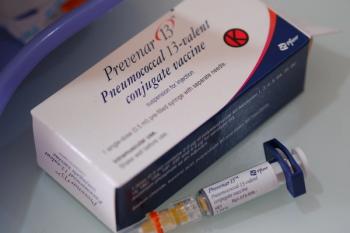
Smartphone-based Interventions Alone Do Not Increase Smoking Cessation Rates
Smartphone app-based interventions were found to be more effective when combined with pharmacotherapy.
Among approaches known to assist in smoking cessation, pharmacotherapeutics and behavioral change therapies are the most recommended. However, with the continued rise in smartphone ownership, information technology-based interventions have become more popular. A recent study published in JMIR examined the evidence for the effectiveness of smartphone app-based interventions on smoking cessation rates.1
To accomplish this, investigators from Capital Medical University in Beijing, the Johns Hopkins University School of Nursing and the University of Pittsburgh conducted a systematic review and meta-analysis. Findings from the study showed that smartphone app-based smoking cessation interventions alone did not achieve higher smoking abstinence rates.
“Although smartphone app-based intervention alone did not achieve superior efficacy, higher effect sizes were found in studies that combined smartphone app-based intervention with pharmacotherapy,” the researchers wrote.
The study gathered electronic literature from Wanfang databases, Web of Science, PubMed, the Cochrane Library, Embase, PsycINFO and the China National Knowledge Infrastructure. In total, 9 randomized controlled trials involving 12,967 adults from 6 different countries were included in the meta-analysis between 2018 and 2022. Participants were eligible for the study if they were 18 years or older, actively used a smartphone and smoked more than 5 cigarettes per day.
The primary outcome was the smoking abstinence rate, reported as either a 7-day point prevalence abstinence rate or a continuous abstinence rate, assessed at least 3 months after baseline using objective or self-report measures.
Among 4 included studies that reported 3-month results, there were no significant differences between the smartphone app-based smoking cessation group and the control group. There also were no statistically significant differences observed between groups at the 6-month follow-up. In the 3 studies which included 12-month follow-up, statistically significant differences between groups were observed. However, both groups in those studies received pharmacotherapy in addition to smartphone app-based interventions.
Additionally, the study found that all smartphone app-based smoking cessation interventions with higher levels of adherence were found to be significantly more effective.
Study limitations include heterogeneity among the included studies, specific intervention variation between studies, low adherence to specific interventions and variation in abstinence outcome criteria.
“It is recommended to use smartphone app-based smoking cessation interventions in the future for smokers who receive smoking cessation drug treatment to assist smokers to quit smoking and to continue to refine the frequency of the combination of outpatient follow-up and smartphone app-based smoking cessation interventions to maximize the smoking cessation rate and optimize the cost of human medical resources,” the authors concluded.
References
1. Guo Y, Chen Y, Dabbs A, Wu Y, The Effectiveness of Smartphone App–Based Interventions for Assisting Smoking Cessation: Systematic Review and Meta-analysis, J Med Internet Res. 2023;25:e43242. doi: 10.2196/43242
Newsletter
Pharmacy practice is always changing. Stay ahead of the curve with the Drug Topics newsletter and get the latest drug information, industry trends, and patient care tips.


















































































































